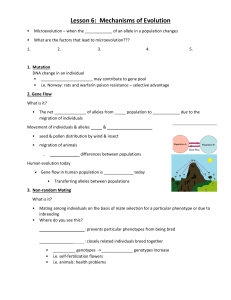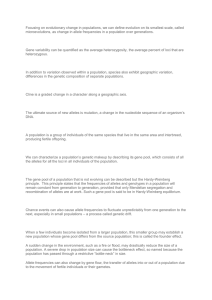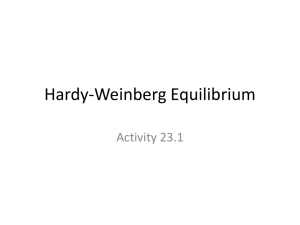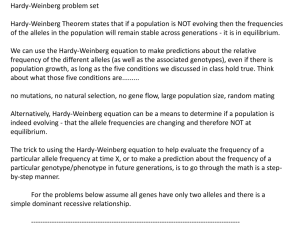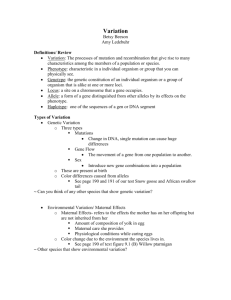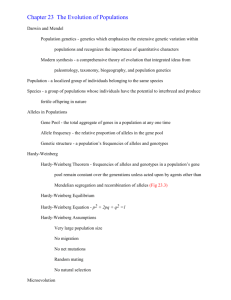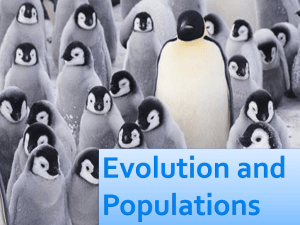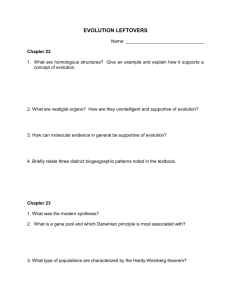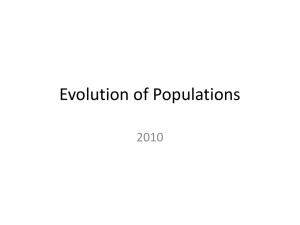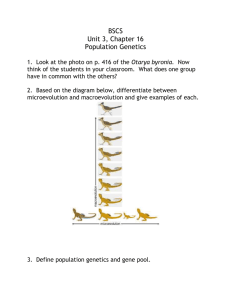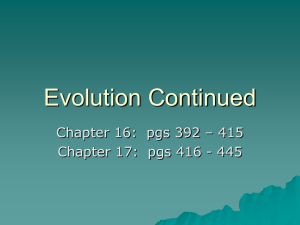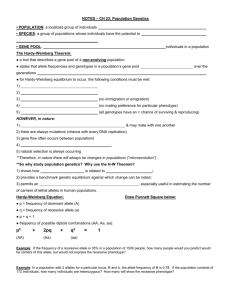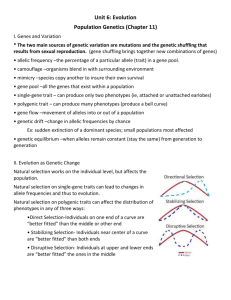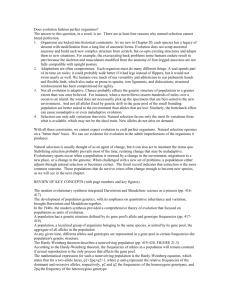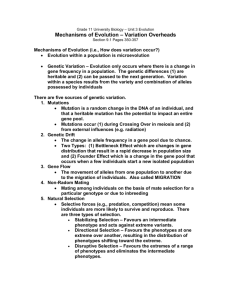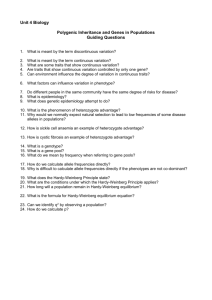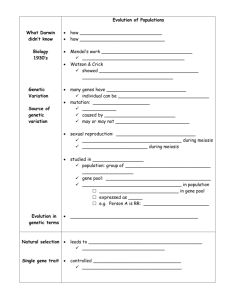Population Genetics and Hardy
advertisement
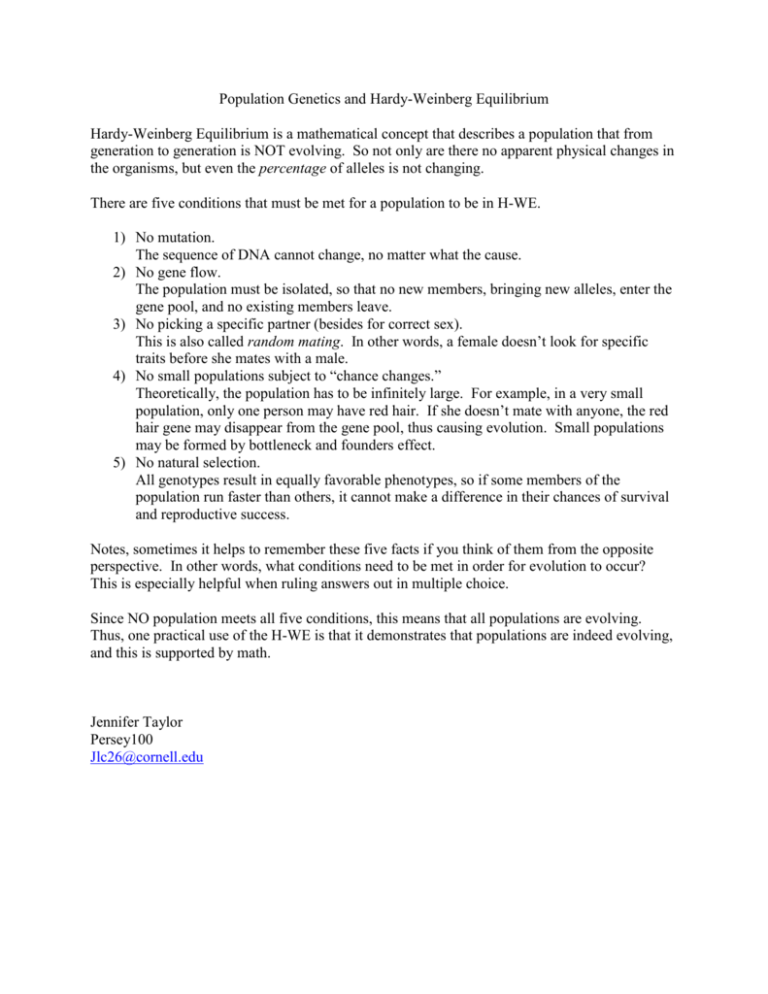
Population Genetics and Hardy-Weinberg Equilibrium Hardy-Weinberg Equilibrium is a mathematical concept that describes a population that from generation to generation is NOT evolving. So not only are there no apparent physical changes in the organisms, but even the percentage of alleles is not changing. There are five conditions that must be met for a population to be in H-WE. 1) No mutation. The sequence of DNA cannot change, no matter what the cause. 2) No gene flow. The population must be isolated, so that no new members, bringing new alleles, enter the gene pool, and no existing members leave. 3) No picking a specific partner (besides for correct sex). This is also called random mating. In other words, a female doesn’t look for specific traits before she mates with a male. 4) No small populations subject to “chance changes.” Theoretically, the population has to be infinitely large. For example, in a very small population, only one person may have red hair. If she doesn’t mate with anyone, the red hair gene may disappear from the gene pool, thus causing evolution. Small populations may be formed by bottleneck and founders effect. 5) No natural selection. All genotypes result in equally favorable phenotypes, so if some members of the population run faster than others, it cannot make a difference in their chances of survival and reproductive success. Notes, sometimes it helps to remember these five facts if you think of them from the opposite perspective. In other words, what conditions need to be met in order for evolution to occur? This is especially helpful when ruling answers out in multiple choice. Since NO population meets all five conditions, this means that all populations are evolving. Thus, one practical use of the H-WE is that it demonstrates that populations are indeed evolving, and this is supported by math. Jennifer Taylor Persey100 Jlc26@cornell.edu

